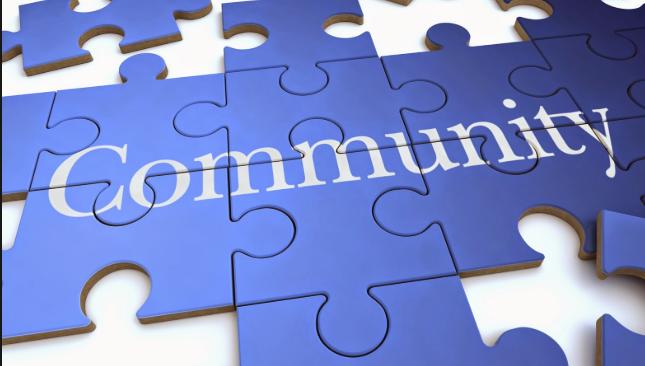So important to the fabric of Talbot County—whether environmental, cultural, human services, caring of dogs, therapeutic horse riding, helping the impoverished, aiding the dying, day care, aiding the mentally ill, assisting wounded warriors, domestic abuse counseling, providing legal assistance—-are the roughly 220 non-profits that serve the county’s 37,500 residents.
The number of nonprofits often is inflated. I’ve heard a number ranging from 250 to 500. It matters not. The services are the key.
The nonprofits survive and flourish because of volunteers–thousands and thousands of them, contributing time, talent and resources. These unsung heroes are invaluable to any community, particularly one as small as Talbot County. Over the years, I’ve worked closely, happily so, with men and women whose contributions of native ability and financial assistance are indeed impressive.
The combination of competent and committed full-time staff and equally capable and passionate volunteers yields dividends for non-profits.
My hobby in retirement has been non-profits. I can’t do woodwork or gardening or painting, or anything that resembles creative output.
I like to read but not half a day. I like to work with other people. I like to upgrade our community in a small way.
And, of course, I write this weekly column. Readers have to judge its quality. I must admit that every once in awhile this weekly contribution to community dialogue does give me a form of satisfaction akin to producing something tangible and useful.
Like maybe a piece of furniture. A literary night stand, as it were.
When I think about philanthropy—both in treasure and talent—I marvel at the accomplishments of Bob Perkins, a friend and St. Michaels resident who recently died. After a successful 35-year career as a Chrysler executive, including 11 years in Australia, Bob retired to Talbot County in the early 1990s. He duplicated his corporate success in the nonprofit world.
Bob served as a member and then chairman of the board of governors at the Chesapeake Bay Maritime Museum (CBMM). He then devoted his energy to the YMCA of the Chesapeake. where he was a board member and chair. Watching him as a fellow board member at CBMM, I admired his enthusiasm, people skills and management acuity.
He exuded a positive attitude. He did this amid serious organizational challenges, as is true in any enterprise.
Talbot County is blessed with many people like Bob Perkins. Retirement is just the beginning of a new phase of life devoted to giving back and bettering your community. The pool of talent is rich with selfless, energetic and skilled individuals. They have progressed beyond the need for accolades and promotions.
They want to leave the world a better place.
As I thought about this column, I remembered reading in college Democracy in America, written so adroitly by Alexis de Tocqueville, a French civil servant from an aristocratic family, after a nine-month visit to the United States in 1831-1832. I recalled that he focused upon the slew of associations in our thriving country devoted to a plethora of causes.
According to John Huebler, senior major gift officer at the Illinois Institute of Technology, “Tocqueville viewed the proliferation of associations as a unique response that was not only critical to the success of the experiment of democratic government, but also to provide for the well-being of all of its citizens in accordance with a sense of equality that was previously unknown.”
Though this uncannily perceptive observer of our country did not refer specifically to philanthropy, he described the structure that undergirds the burst of volunteerism in the United States and the subsequent financial support generated by associations.
Huebler wrote that Tocqueville “found that Americans had embraced the idea of associations with a zeal unknown to the aristocracies of France and England…associations extended democracy beyond the scope of elected offices, to the level of people who share a common interest around which they effect action for large groups of people.”
When I arrived in Talbot County in October 1976, I was amazed at the size and breadth of the YMCA on Idlewild Avenue in Easton. I saw a vibrant organization that served the needs of young and old regardless of social class. It was brimming with activity. I was impressed.
Particularly since my retirement, I have observed with pride and wonder the value brought to our community by the Talbot Hospice Foundation, Channel Marker, Habitat for Humanity, the Eastern Shore Land Conservancy (I’m a board member), Shore Riverkeepers, the Frederick Douglass Honor Society, Waterfowl Chesapeake, the Mid-Shore Multicultural Center, Phillips Wharf—and so many other worthy “associations.”
My apologies for the short list.
It may sound trite to say that the more than 200 non-profits in Talbot County provide the glue that keeps our community together and allows it to serve numerous interests and people. But it’s true. Abundantly so.
Were Alexis de Tocqueville to visit our community for at least a week, he would see that democracy has prospered in this special place.
Columnist Howard Freedlander retired in 2011 as Deputy State Treasurer of the State of Maryland. Previously, he was the executive officer of the Maryland National Guard. He also served as community editor for Chesapeake Publishing, lastly at the Queen Anne’s Record-Observer. In retirement, Howard serves on the boards of several non-profits on the Eastern Shore, Annapolis and Philadelphia.



Write a Letter to the Editor on this Article
We encourage readers to offer their point of view on this article by submitting the following form. Editing is sometimes necessary and is done at the discretion of the editorial staff.